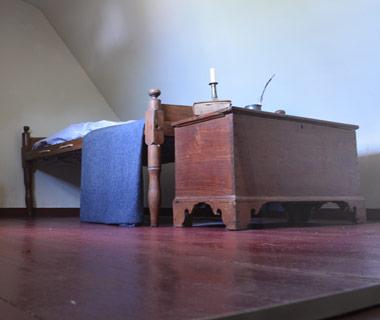I was in Baltimore for a wedding, so I decided to visit Edgar Allan
Poe’s house at 208 North Amity Street, the way you would. Naturally I walked there.
I didn’t, and of course still don’t, know Baltimore. I haven’t even watched the TV series The Wire
– but I’m told there’s a scene where one of the characters says, “Yeah, so we out on Carrollton, this ol' white motherfucker and his wife
roll up, he's like, ‘Young man, you know where the Poe House is?’ I'm like, ‘Unc, you kiddin' me? Look around,
take your pick.’” This obviously has to
be said in an accent where “poe” and “poor” are pronounced the same way.
I didn't know about this when I
set off walking, and that may have been just as well. For that matter I
hadn’t read the Yelp reviews of the Poe House, many of which seem to have been written by
paranoids and wimps:
Here’s one JD from New York: “warning: do not go! this is a small old house located in the
middle of the ghetto, most dangerous neighborhood of the state. we were
followed three blocks from the museum by some of the people from the 'hood',
probably to rob us as we were told by locals. this was in the afterboon!
we never made it - we luckily made it to a safe street with a concerned
samaritan who escorted us out of the hood.” (A lot is sics required in there).
Oh please! If you want to see a ghetto, I can show you a
ghetto, and this isn’t one. Fact is, the Poe house is in the middle of a project – and (at least as it appeared to
a man walking through on a Friday morning) a pretty decent one. The houses I saw along the way all looked
well kept; there were a few bits of neglected waste ground, but no wrecked cars, no conspicuous vandalism,
and remarkably few graffiti. This looked like a place where not very well off people led perfectly decent lives. Why should this surprise anybody?
Still, it’s got to be said,
that as I walked west from downtown it wasn’t long before I was definitely the only white
man on the street. Did I feel
threatened? No. Did I feel out of place? You bet.
And it definitely didn’t feel the place to start taking photographs
like some rubber-necking tourist: I’ll leave that to the Google boys:
The Poe house was built
in about 1830, and is small, as 1830 houses tend to be. Despite its name, it was actually rented by
Maria Clemm, Poe’s aunt, who moved there in late 1832 or early 1833. Maria, a woman of 43, lived there with her
ailing mother, her 10 year old daughter Virginia, and of course Poe who was
then aged 23 and soon developed a passion (chaste or otherwise) for Virginia.
Poe moved out of the house in the autumn of 1835, and
Maria was left unable to pay the rent.
In due course she and Virginia moved to Richmond to live with Poe. Poe and Virginia were subsequently married,
when she was 13. Don't ask.
There isn’t really too much evidence of Poe in the
house – a chair, some prints, a telescope.
There’s one attic bedroom restored to look authentically lived in,
though it’s not known whose bedroom this actually was. The house is well worth seeing but it probably won’t delay you long, and
then you can plunge out into the mean streets of Baltimore again.
Most likely you’ll want to walk back via the
Westminster Burial Ground to look at Poe’s graves, yep two of them, a modest
one in the back (that's it above) where he rested for 25 years or so, before being moved to a
prominent spot with a monument that can easily be seen from the street.
I'm not sure whether it would be good to have two graves, or whether it would just be confusing.
I'm not sure whether it would be good to have two graves, or whether it would just be confusing.
It rained pretty much all the time I was in Baltimore. That, and the distractions that go with being at a wedding, meant that no great amount of pedestrianism was undertaken. I never thought it would be. But I did enough walking to spot some nice semi-ruins - these not in the projects but in the relatively posh area of Mount Vernon:
Some great brickwork and ghost signs:
This splendidly lean building:
And these two diagrammatic walkers hellbent on a collision course:
Here’s a Poe walking story.
After “The Raven” was published in January
1845 in the New York Evening Mirror and became an incredible popular success,
Poe would find himself pursued by gaggles of small children following him along
the street flapping their arms like the raven, and he’d play along and turn
around and playfully shout “Nevermore!” and the kids would run away giggling. This seems so completely unlikely, so
completely unPoe-like that it must surely be true. This however happened in New York, not
Baltimore. Shame.















.jpg)

